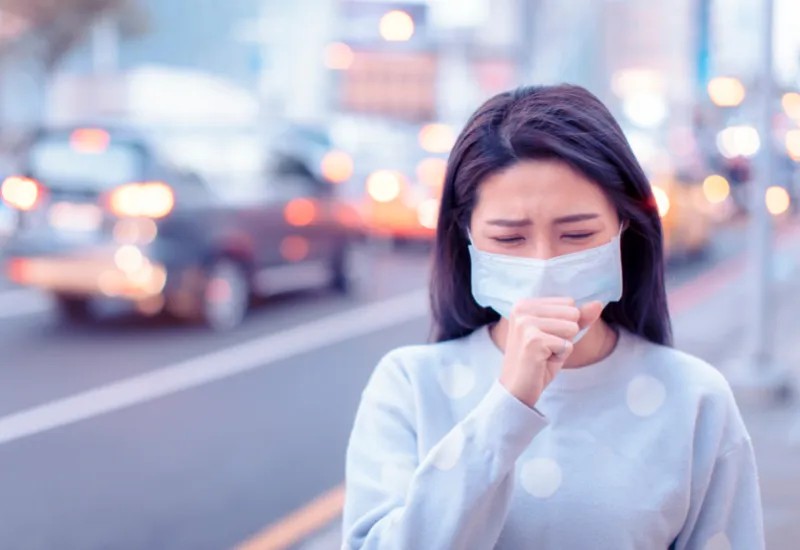Air pollution has emerged as one of the most pressing environmental issues of our time, with profound effects on human health, particularly on the respiratory system. The World Health Organization (WHO) estimates that air pollution is responsible for millions of premature deaths each year, making it a critical public health concern but orthodontist peoria il may help you in this. This article delves into the various ways air pollution affects respiratory health, the underlying mechanisms, and strategies to mitigate these impacts.
Understanding Air Pollution
Air pollution occurs when harmful substances, including particulate matter (PM), nitrogen oxides (NOx), sulfur dioxide (SO2), carbon monoxide (CO), and volatile organic compounds (VOCs), contaminate the air. These pollutants can originate from various sources such as vehicle emissions, industrial processes, and natural events like wildfires. The two primary categories of air pollution are:
- Outdoor Air Pollution: This includes pollutants from sources such as traffic, industry, and agriculture that contribute to urban smog and haze.
- Indoor Air Pollution: This type includes pollutants from household products, smoking, and poor ventilation, which can lead to significant health issues.
Respiratory Health Effects
1. Chronic Respiratory Diseases
Exposure to air pollution is closely linked to chronic respiratory diseases such as asthma, chronic obstructive pulmonary disease (COPD), and bronchitis. Particulate matter (PM2.5 and PM10) can penetrate deep into the lungs and even enter the bloodstream, leading to inflammation and long-term damage.
- Asthma: Pollutants can exacerbate asthma symptoms by triggering inflammation and hyperreactivity of the airways. Children and adults living in high pollution areas are more likely to develop or experience worsening asthma.
- COPD: Chronic exposure to pollutants accelerates the progression of COPD, a group of diseases that cause airflow blockage and breathing-related problems. Pollutants contribute to the degradation of lung function over time.
2. Acute Respiratory Conditions
Short-term exposure to high levels of air pollution can lead to acute respiratory issues such as:
- Acute Bronchitis: Pollutants can irritate the bronchial tubes, leading to inflammation and acute bronchitis, characterized by coughing, mucus production, and chest discomfort.
- Respiratory Infections: Exposure to air pollutants can weaken the immune system and make the respiratory tract more susceptible to infections like pneumonia and the flu.
3. Lung Cancer
Long-term exposure to high levels of air pollution, particularly from industrial and vehicular emissions, has been linked to an increased risk of lung cancer. Studies have shown that pollutants such as benzene and formaldehyde are carcinogenic and can contribute to the development of cancerous cells in the lungs.
Mechanisms of Damage
Air pollutants affect respiratory health through several mechanisms:
- Inflammation: Pollutants can trigger inflammatory responses in the lungs, leading to chronic respiratory conditions and exacerbating existing diseases.
- Oxidative Stress: Pollutants generate free radicals that cause oxidative stress, damaging lung tissues and leading to respiratory diseases.
- Immune System Disruption: Pollutants can impair the immune system’s ability to respond to infections, increasing susceptibility to respiratory illnesses.
Vulnerable Populations
Certain groups are more vulnerable to the health effects of air pollution:
- Children: Children’s respiratory systems are still developing, making them more susceptible to the effects of air pollution. Exposure during early life can have long-term consequences on respiratory health.
- Elderly: Older adults often have pre-existing health conditions that can be exacerbated by air pollution, making them more at risk for respiratory diseases.
- People with Pre-existing Health Conditions: Individuals with asthma, COPD, or other respiratory conditions are more likely to experience worsening symptoms due to air pollution.
Strategies to Mitigate Air Pollution
Addressing the impact of air pollution on respiratory health requires a multi-faceted approach:
1. Policy and Regulation
Governments play a crucial role in controlling air pollution through regulations and policies. Implementing stricter emission standards for industries and vehicles, promoting cleaner energy sources, and enhancing public transportation can significantly reduce pollution levels.
2. Community Initiatives
Local initiatives such as tree planting, promoting green spaces, and encouraging the use of public transportation can help reduce urban air pollution. Community awareness programs can educate the public about the sources and effects of air pollution and promote healthier practices.
3. Personal Measures
Individuals can take steps to protect their respiratory health:
- Reduce Exposure: Limit outdoor activities during high pollution days and use air purifiers indoors.
- Healthy Lifestyle: Maintain a healthy diet, exercise regularly, and avoid smoking to support overall lung health.
- Advocate for Change: Support policies and initiatives aimed at reducing air pollution and raise awareness about the importance of clean air.
Conclusion
The impact of air pollution on respiratory health is profound and far-reaching. From chronic diseases to acute respiratory conditions and even cancer, the consequences of exposure to polluted air are significant. By understanding the mechanisms of damage, recognizing vulnerable populations, and implementing effective strategies to reduce pollution, we can mitigate its effects and protect respiratory health. As we continue to address this critical issue, both individual actions and collective efforts will be essential in creating a healthier, cleaner environment for future generations






